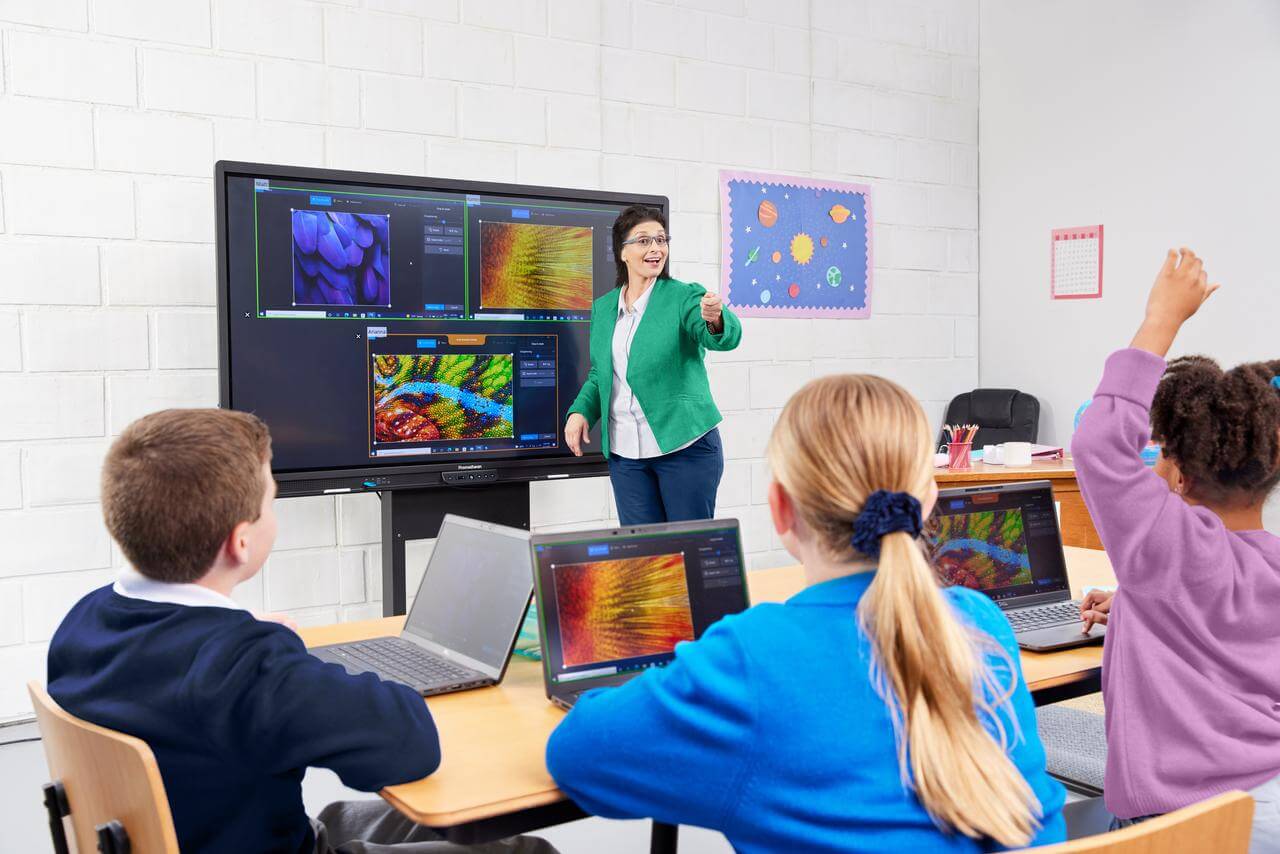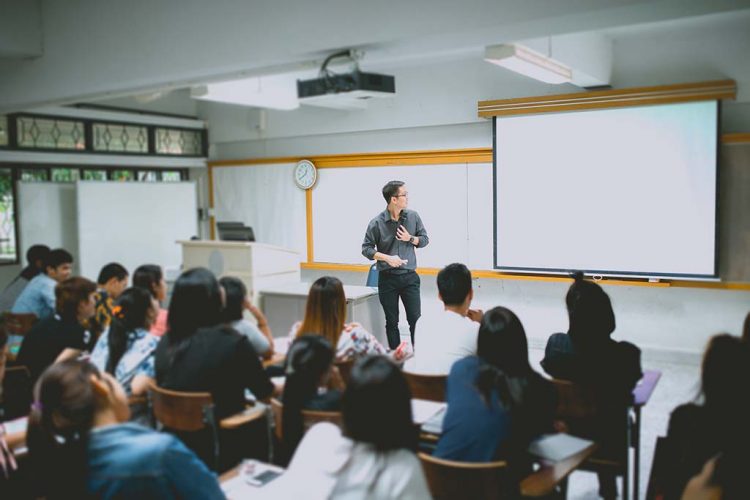Comprehensive Primary Science Tuition Singapore for Primary School Students
Comprehensive Primary Science Tuition Singapore for Primary School Students
Blog Article
A Comprehensive Guide to the Numerous Understanding Approaches in Key Science Instruction
The exploration of varied understanding approaches in key science instruction presents a possibility for teachers to improve student engagement and understanding significantly. By examining hands-on understanding methods, inquiry-based techniques, and collective techniques, we can identify reliable techniques that cater to various finding out styles. Furthermore, the integration of modern technology and distinguished guideline plays a critical function in cultivating an inclusive setting. However, the inquiry remains: just how can these methods be successfully implemented in the class to optimize their impact? The solution depends on a better analysis of each method and its ramifications for training science.

Hands-On Knowing Strategies
Hands-on learning methods play a crucial duty in primary science guideline, engaging trainees in energetic expedition and testing. These approaches allow students to interact directly with sensations and products, cultivating a much deeper understanding of clinical ideas. By making use of manipulatives, versions, and real-life experiments, educators develop a setting where pupils can observe, hypothesize, and examine their ideas.
Such methods not only improve comprehension however also cultivate essential reasoning and analytic abilities. When students take part in activities like developing easy devices, growing seeds, or performing chain reactions, they are motivated to ask inquiries and look for answers with their very own monitorings. This experiential approach helps to demystify complicated scientific principles, making them extra available and relatable.
Furthermore, hands-on learning advertises cooperation among peers, as trainees frequently work in groups to perform experiments or share findings. This synergy not just enhances their knowing experience however likewise develops crucial social abilities. Ultimately, incorporating hands-on techniques in key science guideline promotes a long-lasting love of understanding and interest concerning the environment, laying a strong structure for future scholastic pursuits in scientific research and beyond.
Inquiry-Based Knowing
Inquiry-based learning is a training approach that motivates pupils to ask questions, check out sensations, and construct their very own understanding of clinical concepts. This technique moves the emphasis from typical teacher-led instruction to a much more student-centered experience, where students take the campaign in their educational journey. By promoting inquisitiveness, inquiry-based learning promotes much deeper involvement with the material, allowing trainees to discover topics in a significant context.
In technique, this approach typically entails hands-on experiments, monitorings, and vital reasoning tasks that align carefully with the clinical method. Trainees are encouraged to develop theories, design investigations, and evaluate information, which grows vital abilities such as analytical and analytical reasoning. The role of the instructor in this framework is to help with expedition, guiding trainees through the query process while motivating independent idea and collaboration.
Furthermore, inquiry-based understanding supports a sense of possession over the learning process, motivating trainees to go after expertise proactively. This method not only enhances understanding of scientific concepts but likewise cultivates a long-lasting love for understanding, equipping trainees with the skills required to browse a significantly intricate globe.
Collaborative Learning Approaches
Joint understanding approaches equip trainees to engage in significant interactions with peers, cultivating a common obligation for their educational end results. In primary scientific research instruction, these techniques urge learners to work with each other to discover clinical concepts, solve troubles, and conduct experiments (primary science tuition Singapore). By taking part in group tasks, students can take advantage of diverse viewpoints, enabling richer understanding and retention of scientific expertise
One key element of collaborative discovering is the focus on communication skills. Trainees have to express their ideas, pay attention proactively to others, and bargain concepts, every one of which are critical competencies in both real-world and academic contexts. This social interaction not only enhances their understanding of clinical website here concepts however likewise promotes teamwork and conflict resolution abilities.
In addition, joint understanding usually brings about raised inspiration and engagement. When students see the value of their payments within a team, they are most likely to take possession of their knowing trip. Educators can facilitate this process deliberately organized group tasks that straighten with educational program goals while providing advice on efficient collaboration strategies. Generally, integrating collaborative understanding strategies in main science guideline cultivates a dynamic understanding atmosphere that prepares students for future academic and social challenges.
Modern Technology Combination in Scientific Research
The integration of modern technology in primary scientific research instruction improves discovering experiences by providing ingenious tools and sources that sustain numerous mentor techniques, consisting of collaborative discovering - primary science tuition Singapore. Using digital systems, simulations, and interactive applications permits students to involve deeply with clinical concepts, promoting a much more hands-on approach to discovering
Virtual labs, for example, allow students to conduct experiments securely and effectively, advertising inquiry-based knowing. These tools can mimic real-world clinical circumstances, permitting students to imagine intricate processes that would be challenging to duplicate in a traditional classroom setting. Innovation cultivates interaction and collaboration among students, as they can share findings and work with each other on projects via on-line systems.
In addition, multimedia discussions and academic video clips can enhance lessons by providing to diverse understanding designs, making abstract ideas more easily accessible. Data analysis devices additionally equip pupils to collect and analyze scientific information, reinforcing critical assuming skills. Overall, the tactical incorporation of modern technology in main scientific research direction not just boosts interaction yet likewise prepares students for a technologically sophisticated culture, furnishing them with important abilities for future scientific ventures.
Differentiated Guideline Techniques
Set apart instruction approaches are important for resolving the diverse demands of learners in main scientific research education. These approaches enable why not try this out teachers to customize their teaching techniques to accommodate varying capabilities, passions, and learning styles within the class. By employing distinguished direction, educators can develop an inclusive environment that promotes engagement and improves understanding of scientific ideas.
One reliable approach is to use versatile organizing, which enables trainees to team up with peers at comparable ability degrees or with varying viewpoints. This approach encourages peer knowing and promotes important reasoning. Furthermore, supplying selections in jobs can encourage pop over here pupils, permitting them to select tasks that reverberate with their passions while still fulfilling curricular objectives.
Furthermore, integrating tiered projects is one more valuable technique. By designing tasks with differing degrees of intricacy, teachers can guarantee that all students are appropriately tested, no matter their efficiency. Utilizing developmental analyses to assess comprehending additional enables educators to readjust their training methods dynamically, guaranteeing that each student gets the support they need.
Eventually, executing differentiated instruction methods in main science education and learning not only enhances pupil discovering results but additionally cultivates an interest for science, preparing students for future scholastic pursuits.

Conclusion
In recap, effective key science guideline requires a multifaceted strategy that includes hands-on learning, inquiry-based approaches, and collective strategies. The combination of technology and set apart direction better satisfies varied learning styles, cultivating an environment for expedition and crucial reasoning. By applying these techniques, teachers can boost student interaction and understanding, inevitably nurturing a lifelong enthusiasm for scientific research and questions. Such comprehensive methods are crucial for developing informed and curious future scientists.
The exploration of diverse knowing methods in primary scientific research guideline offers a chance for teachers to improve student engagement and understanding dramatically.Hands-on understanding methods play an essential role in primary scientific research direction, engaging students in energetic expedition and experimentation.Inquiry-based learning is an educational strategy that motivates students to ask inquiries, check out phenomena, and create their very own understanding of scientific principles.Collective learning strategies equip students to involve in significant communications with peers, promoting a shared duty for their educational end results. Generally, incorporating collective knowing strategies in main scientific research direction cultivates a vibrant learning setting that prepares students for future scholastic and social challenges.
Report this page